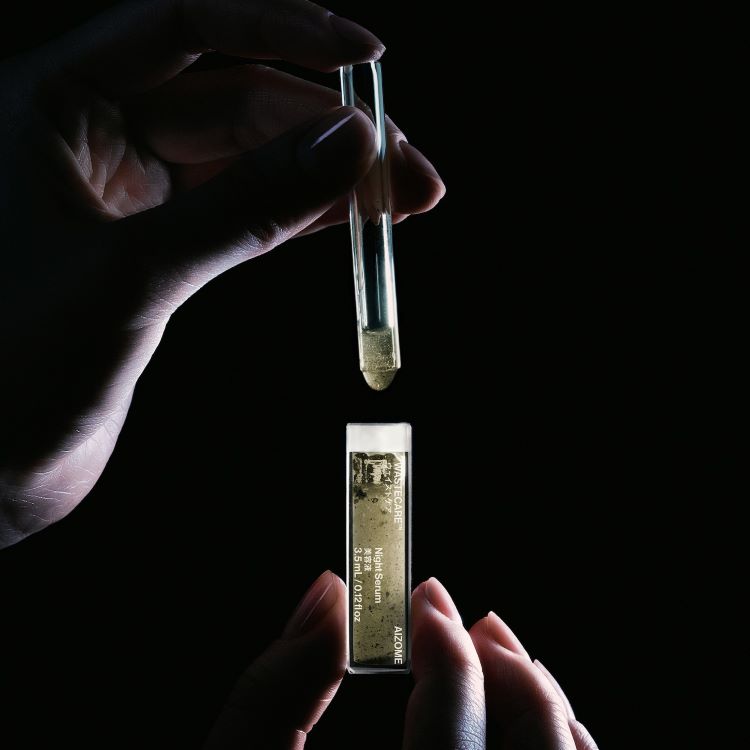Aizome and Serviceplan design skincare made from textile wastewater
Workbyworks’ identity and packaging for the product draws attention to Aizome’s dyeing process and use of natural materials.
Japanese-German textile start-up Aizome has collaborated with creative agency Serviceplan Innovation to design skincare product Wastecare™, made from textile dyeing factory wastewater.
From formaldehyde to heavy metals, there are over 1500 synthetic chemicals being used for dyeing and finishing textile products, according to Aizome. Looking to use non-harmful, chemical-free alternatives, the textile start-up claims to only use plants, water and ultrasound in its dyeing process, meaning by-products such as the wastewater possess “natural health benefits”, including anti-inflammatory, pain-relieving and skin rejuvenating qualities.

Wastecare is the first skincare product made from industrial waste and seeks to demonstrate “not only Aizome’s world-changing technology but also the power of creative thinking,” says Serviceplan Group chief creative officer Alex Schill. The idea was to prove how clean Aizome’s processes are by creating a beauty product that could pass strict eco-toxicological and cosmetic safety standards.
Although plant-based dyeing is not a new concept, it has previously been incompatible with mass production as colours have been known to fade quickly without chemical finishing, according to Aizome. Aizome’s patented dyeing method uses ultrasound to biologically connect plant molecules to the textile fibres, resulting in dyes that do not fade.

Aizome and Serviceplan experimented with various medicinal plants that contribute different properties to the wastewater. Indigo, which is used to turn the yarn blue, makes the fabric anti-inflammatory and is said to have benefits for eczema-prone skin, while Rubia, which produces a red pigment, “helps alleviate menstrual pain”, Aizome says. Yellow hues can be achieved from using turmeric, which is known to be an antioxidant.
The National Eczema Association has recognized Aizome’s product and dyes as “an innovation to improve the quality of life for people with sensitive skin”. The start-up also conducted research with the University of Cambridge, which revealed the antioxidant and anti-inflammatory properties of indigo leaf that aid in “accelerating the healing of skin injuries”.

New York-based design studio Workbyworks is responsible for the visual identity and packaging design for Wastecare. Studio founder and designer Han Gao says that it has been “packaged as a high-end beauty product, featuring a medical-grade vial and fully recycled materials.”
Wastecare’s design system is inspired by ultrasound and traditional Japanese culture, with a packaging concept devised to create “an intimate unboxing experience”, says Gao. The cardboard layers gradually reveal information about the product inside, starting with data visualisation, then moving on to a sample of the Aizome fabric, until finally you get to the bottle of serum.
As well as having aesthetic appeal, Workbyworks also sought to make the packaging design practical. The reinforced cardboard layers mean that the product can be shipped without outer protection and recycled afterwards.
The first edition of Wastecare was shipped out to potential collaborators in fashion, textiles and healthcare with the view of reaching designers, producers, and decision makers. In the coming months, Wastecare will be showcased at pop-up stores, trade fairs and conferences.
-
Post a comment





